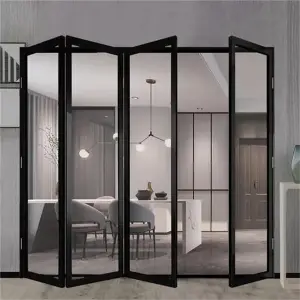Sliding glass doors are a popular feature in many homes, providing a seamless connection between indoor and outdoor spaces while allowing natural light to flood into the interior. However, they can also be a source of energy loss, especially if they are not properly insulated. In this article, we’ll explore various methods and techniques for insulating sliding glass doors to increase energy efficiency and comfort in your home.
Why Insulate Sliding Glass Doors?
Sliding glass doors are notorious for poor insulation. Large glass panels and sliding mechanisms can create gaps and air leaks, allowing heat to escape in the winter and come in in the summer. This can result in higher energy bills as your heating and cooling systems work harder to maintain a comfortable indoor temperature. Additionally, poor insulation can cause drafts, cold spots, and condensation issues near doors.
Insulated sliding glass doors are essential for maintaining a comfortable indoor environment and reducing energy consumption. By taking the time to properly insulate your doors, you can create a more energy-efficient home and potentially save money on utility bills.
How to insulate sliding glass doors
There are a variety of effective ways to insulate sliding glass doors, from simple DIY solutions to more extensive upgrades. Here are some of the most common techniques for improving the insulation of sliding glass doors:
Weatherstripping: One of the easiest and most cost-effective ways to insulate your sliding glass door is to apply weatherstripping around the door frame. Weather stripping helps seal any gaps and prevent drafts from entering or escaping. Self-adhesive foam or rubber weather stripping can be easily adhered to the edge of the door frame to create a tight seal when the door is closed.
Curtains or Curtains: Hanging heavy curtains or drapes over your sliding glass doors can provide an extra layer of insulation. Choose curtains with thermal linings or heavy fabrics to help block drafts and retain heat in winter. In the summer, curtains can also help reduce the amount of heat entering your home through the glass.
Insulating Window Film: Insulating window film is a thin, clear material that can be applied directly to the glass surface of your sliding door. The film helps improve the door’s insulation by reducing heat transfer and blocking UV rays. This is a relatively simple and affordable solution that can significantly improve the energy efficiency of your door.
Draft stoppers: Also known as door snakes, draft stoppers can be placed along the bottom of the door to block airflow and prevent heat loss. These long, narrow pads are usually filled with an insulating material such as foam or sand, and they can be easily placed to create a barrier against air leaks.
Upgrade to energy-efficient glass: If your budget allows, consider upgrading your sliding doors to energy-efficient glass. Double or triple glazing with a low-emissivity (low-E) coating can significantly improve insulation and reduce heat transfer. While this is a more expensive option, it can provide long-term energy savings and improve the overall comfort of your home.
Professional Insulation Services: For homeowners looking for a comprehensive solution, professional insulation services may be a worthwhile investment. An insulation contractor can assess the specific needs of your sliding glass door and recommend a tailored solution, such as adding insulation around the door frame or replacing worn weatherstripping.
Tips for Maximizing Insulation Efficiency
In addition to implementing isolation methods, there are some tips and best practices that can help you maximize your productivity:
Regular maintenance: Keep your sliding glass doors in good condition with regular maintenance. Clean the tracks and lubricate the sliding mechanism to ensure smooth operation and a tight seal when the door closes.
Seal any gaps: Check the door frame and surrounding area for gaps or cracks that could lead to air leaks. Use caulk or sealant to fill these gaps and prevent airflow from entering or escaping.
Consider Door Coverings: In addition to curtains or curtains, consider other door coverings such as blinds or shades to provide an extra layer of insulation and privacy.
Utilize door draft guards: Door draft guards can be placed at the base of the door to block drafts and maintain a consistent indoor temperature.
Professional Consultation: If you are unsure about the best insulation options for your sliding glass doors, consider consulting with a professional contractor or energy auditor. They can provide personalized recommendations based on the specific features of your door and home.
By taking a proactive approach to insulating your sliding glass doors, you can create a more energy-efficient and comfortable living environment. Whether you choose a simple DIY solution or invest in professional upgrades, the benefits of improved insulation can have a lasting impact on your home’s energy consumption and overall comfort. With the right insulation, you can enjoy the beauty and functionality of your sliding glass doors while minimizing energy losses and maximizing cost savings.
Post time: Mar-22-2024

